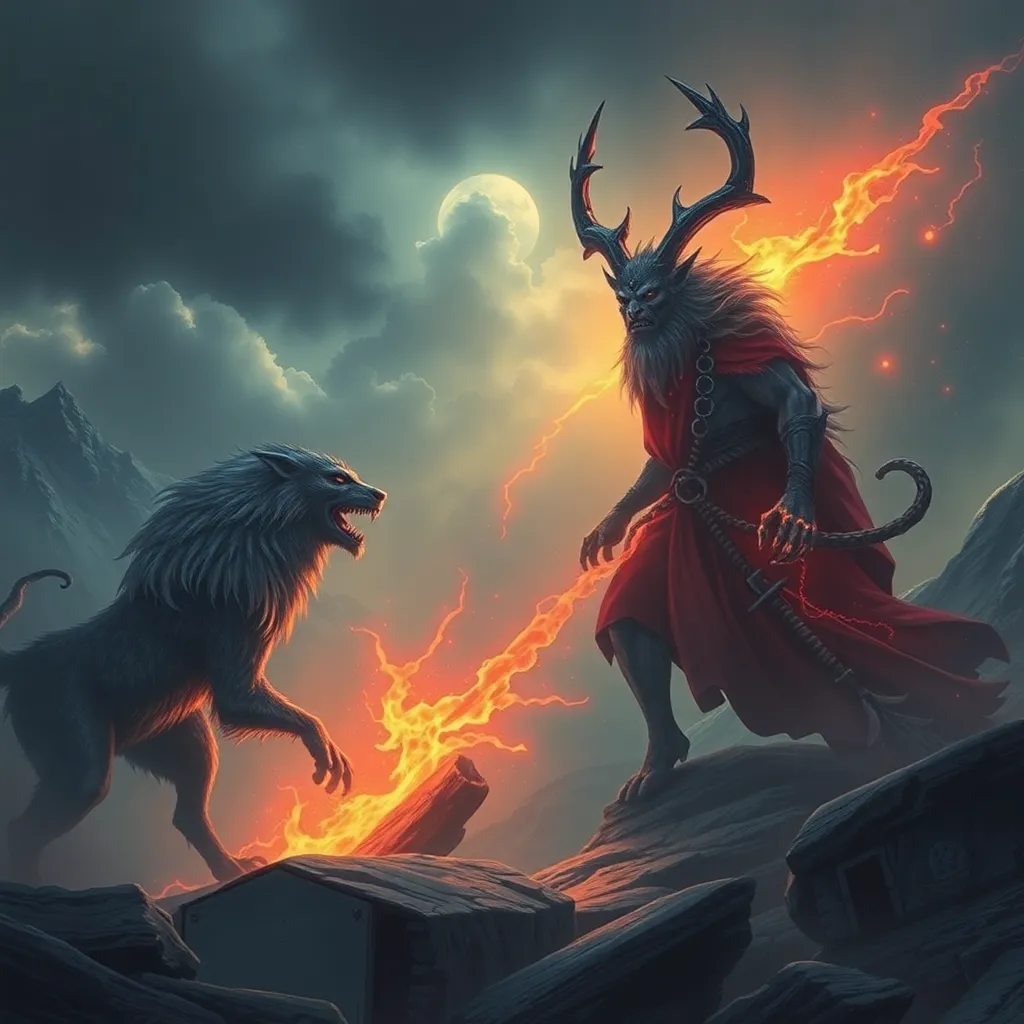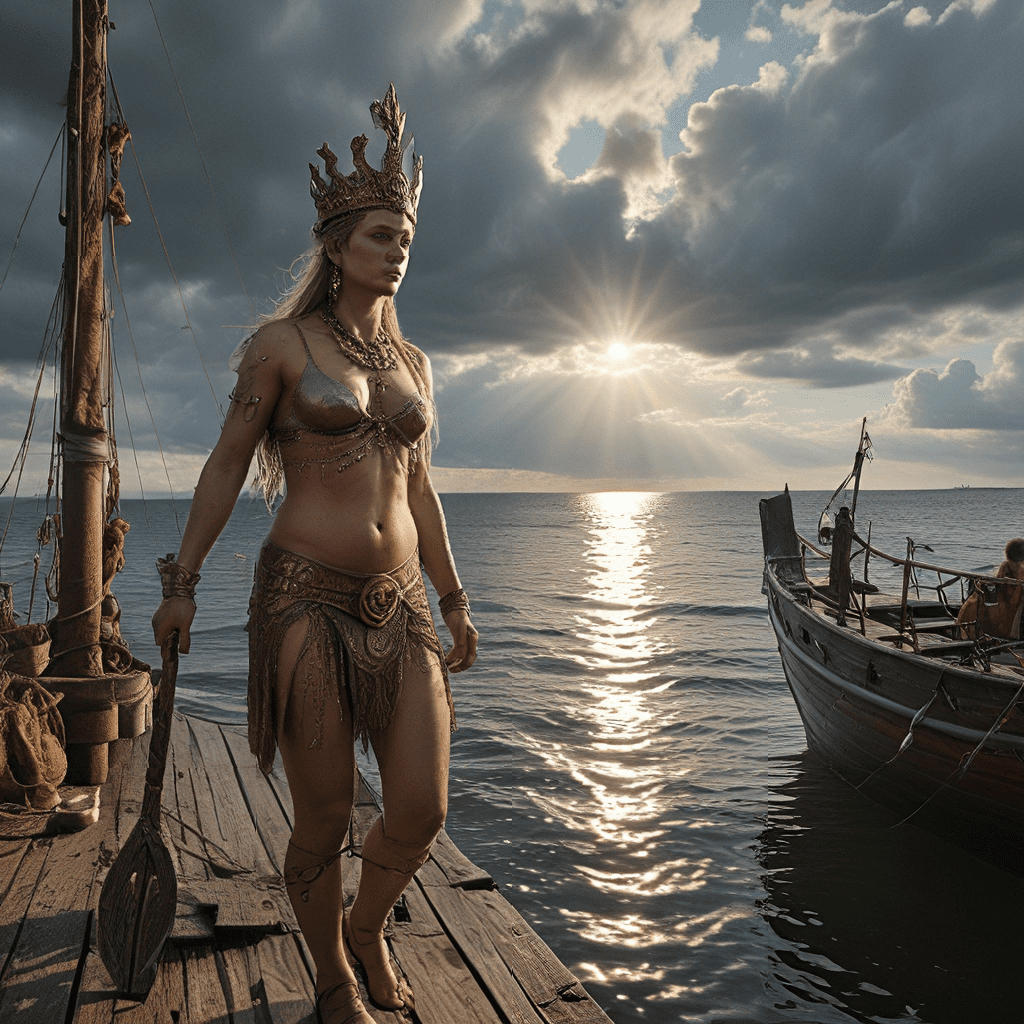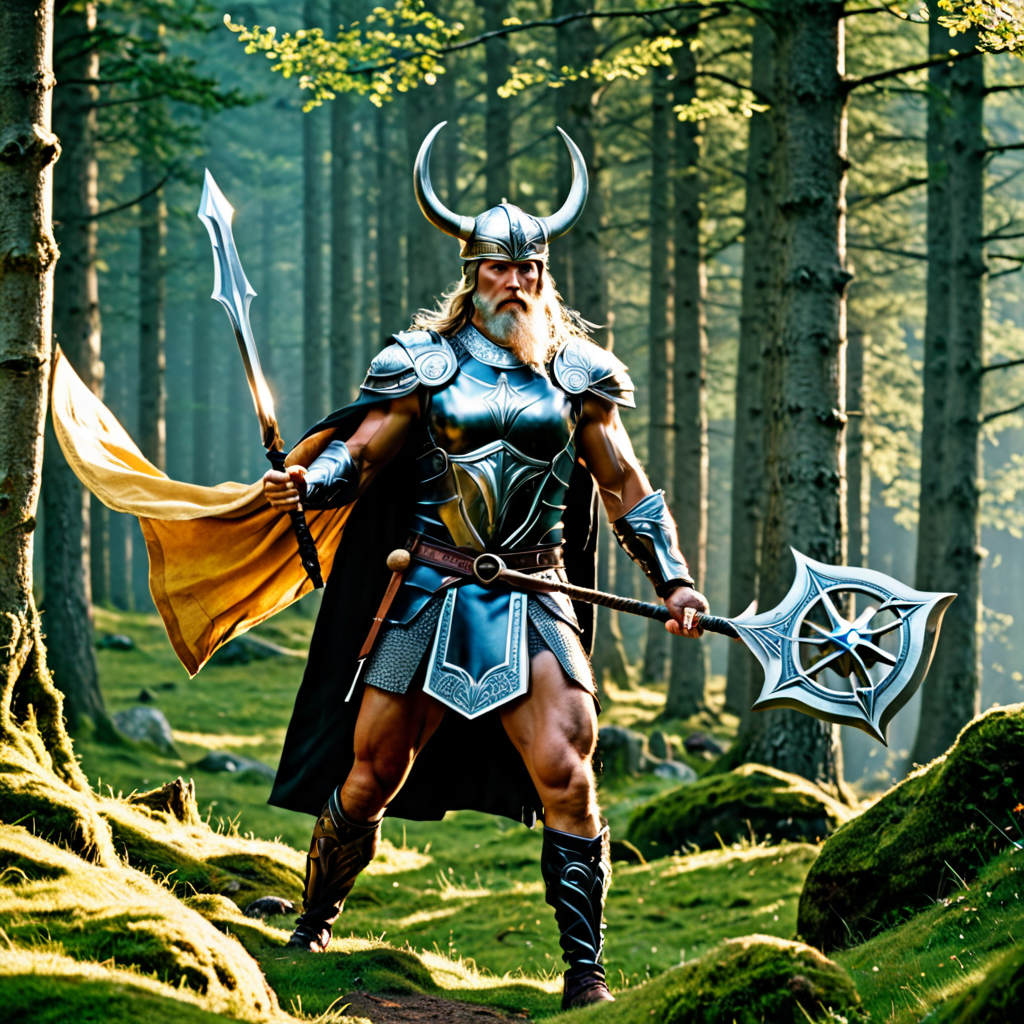The Bonds of Fate: Examining Fenrir’s Destiny in Norse Mythology
I. Introduction
Fenrir, a fearsome wolf in Norse mythology, holds a significant place in the rich tapestry of Viking lore. As the offspring of the trickster god Loki and the giantess Angerboda, Fenrir embodies the themes of chaos, destruction, and inevitability that permeate Norse beliefs. The concept of fate, or “wyrd,” is central to these stories, emphasizing that events are predetermined and unavoidable. This article aims to analyze Fenrir’s destiny, exploring its implications and the lessons it imparts about fate within the broader context of Norse mythology.
II. The Origins of Fenrir
A. Birth and lineage: Fenrir as the offspring of Loki and Angerboda
Fenrir’s lineage is as complex as his character. Born to Loki, the god of mischief, and Angerboda, a giantess, Fenrir is one of three notable children, alongside Jormungandr, the World Serpent, and Hel, the goddess of the underworld. This lineage places Fenrir in a precarious position, being both part of the divine Aesir family and connected to the chaos of giants.
B. The prophecy surrounding Fenrir’s existence
The existence of Fenrir was foretold by prophecy, which declared that he would play a crucial role in the destruction of the gods during Ragnarok. This prophecy marked Fenrir as a creature of fate, destined to bring about chaos and destruction, leading to the inevitable downfall of the Aesir. The foreboding nature of this prophecy cast a long shadow over Fenrir’s life.
C. The role of the Aesir in Fenrir’s early life
The Aesir, the principal gods of Norse mythology, initially took a somewhat passive role in Fenrir’s life. They allowed him to grow and develop, but as he became stronger and more formidable, their trepidation about his potential for destruction grew. This concern ultimately shaped their decisions regarding his fate.
III. Fenrir’s Growth and the Rise of Fear
A. Fenrir’s rapid growth and strength
From his early days, Fenrir demonstrated remarkable growth. He quickly outgrew the other wolves and became a symbol of formidable power. His strength was not just physical but also symbolic, representing the potential chaos that lay ahead for the Aesir.
B. The increasing concern among the gods
As Fenrir matured, the gods’ fears intensified. They recognized that he was not merely a beast but a being of great potential for destruction. This anxiety led to discussions among the Aesir about how to manage Fenrir’s power without provoking him further.
C. The decision to bind Fenrir and the creation of Gleipnir
To contain Fenrir’s burgeoning strength, the Aesir decided to bind him. They commissioned the creation of Gleipnir, a magical chain made from six seemingly impossible ingredients:
- The sound of a cat’s footfall
- The beard of a woman
- The roots of a mountain
- The sinews of a bear
- The breath of a fish
- The spittle of a bird
These ingredients symbolized the elusiveness and fragility of Fenrir’s fate.
IV. The Binding of Fenrir
A. The circumstances leading to Fenrir’s binding
When the gods approached Fenrir to propose binding him, he was initially skeptical. To gain his trust, they challenged him to test his strength against various chains. Fenrir easily broke free from the first two chains, but when Gleipnir was presented, he sensed a trick.
B. The significance of Gleipnir as a magical chain
Gleipnir was not just a physical binding; it represented the inevitability of fate. Its creation involved elements that were intangible and mystical, symbolizing how fate can be both inescapable and unexpected. The chain’s construction foreshadowed the eventual unleashing of Fenrir’s true nature.
C. Fenrir’s reaction and the implications of his binding
Upon realizing the binding was an act of treachery, Fenrir became enraged. He bit off the hand of Tyr, the god who had bravely placed his hand in Fenrir’s mouth as a gesture of good faith. This act solidified the animosity between Fenrir and the Aesir, marking the beginning of an inevitable conflict.
V. The Prophecy of Ragnarok
A. Fenrir’s role in the events of Ragnarok
According to the prophecies of Ragnarok, Fenrir is destined to break free from Gleipnir during the cataclysmic battle that signals the end of the world. He will confront Odin, the chief of the Aesir, and ultimately devour him, fulfilling the prophecy that had hung over him since birth.
B. The importance of destiny and inevitability in the prophecy
The narrative surrounding Fenrir emphasizes the Norse belief in fate. Despite the gods’ attempts to bind him and avert disaster, Fenrir’s destiny remains unchangeable. This theme of inevitability reflects the broader understanding of life and death in Norse mythology, where fate is an inescapable force.
C. Connections between Fenrir and other mythological figures
Fenrir’s story is intricately connected with other mythological figures. His siblings, Jormungandr and Hel, also play pivotal roles in Ragnarok, creating a tapestry of interconnected destinies that illustrate the chaotic nature of the cosmos.
VI. Symbolism and Interpretations of Fenrir
A. Fenrir as a symbol of chaos and destruction
Fenrir symbolizes the chaos that lies beneath the surface of order. His very existence challenges the stability of the Aesir, representing the primal forces of nature that cannot be controlled. This symbolism resonates with the human experience of grappling with the unknown.
B. Interpretations of Fenrir’s story in modern contexts
In contemporary interpretations, Fenrir’s story has been viewed through various lenses, including psychological and existential frameworks. He is often seen as a representation of the darker aspects of humanity, the potential for destruction that exists within us all.
C. The duality of Fenrir as both a monster and a tragic figure
While Fenrir is undeniably a figure of destruction, he is also a tragic character. Bound by fate and misunderstood, Fenrir’s narrative invites empathy. His actions, driven by destiny rather than choice, reflect the complexities of morality in mythology.
VII. Fenrir’s Legacy in Popular Culture
A. Fenrir’s representation in literature, film, and games
Fenrir’s legacy extends far beyond ancient texts, finding representation in modern literature, films, and video games. He often appears as a powerful antagonist, embodying chaos and destruction in various narratives.
B. The enduring fascination with Fenrir’s character
The character of Fenrir continues to captivate audiences, resonating with themes of fate, rebellion, and the struggle against preordained destiny. His story encourages exploration of the balance between order and chaos.
C. How modern adaptations reflect ancient themes of fate and destiny
Modern adaptations of Fenrir’s tale often explore the tension between free will and fate. They challenge audiences to consider the extent to which individuals can shape their destinies in a world where larger forces are at play.
VIII. Conclusion
In conclusion, Fenrir’s destiny in Norse mythology serves as a profound illustration of the complexities of fate and the inevitability of chaos. His narrative encapsulates the struggle between order and destruction, emphasizing the inescapable nature of prophecy. Fenrir’s legacy, both in ancient texts and modern interpretations, invites reflection on the deeper meanings of fate, morality, and the human condition. As we continue to explore these themes, Fenrir remains a powerful symbol of the bonds of fate that connect us all.




